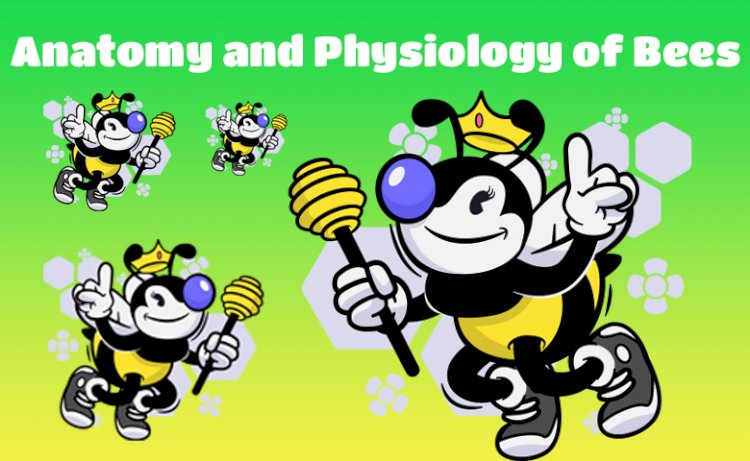In-depth Analysis of Bees' Anatomy and Physiology

Bees are fascinating animals with unusual physical traits and sensory abilities that enable them to communicate and navigate their environment. We'll go into great detail about the wings, legs, antennae, and sensory systems of bees as well as their anatomy and physiology in this article.
Body Composition of Bees.
Bees have a distinct physical profile with a recognizable body shape and coloration. They have two sets of thin, transparent, and flexible wings. Bees can fly and maneuver effectively and quickly thanks to their wings. Their legs are also specialized, with spurs and bristles that help them cling to surfaces and collect pollen and nectar from flowers. Bees also have long antennae that are used for sensory functions like smelling and vibrating detection.
Bees are covered in tiny hairs that aid in the collection and transportation of pollen in addition to their physical characteristics. Their exoskeleton, which is composed of chitin, offers support and protection and is waterproof to aid their ability to fly in wet conditions.
Bees' sensory abilities.
Bees use a variety of sensory abilities for communication and navigation. Large compound eyes that can detect ultraviolet light and are sensitive to polarized light give them excellent vision. Invisible to humans and other animals, this enables bees to see patterns on flowers.
Bees use their sense of smell to find food sources, locate their hive, and identify other individuals in their colony. Bees can communicate with one another through chemical signals because their antennae are covered in olfactory receptors that can detect a variety of chemical compounds.
Finally, bees communicate with one another and navigate their surroundings by using their sense of touch. They can communicate the location of food sources and the presence of predators because they can sense vibrations with their legs and antennae.
Conclusion.
The amazing physical characteristics and sensory abilities of bees allow them to navigate and communicate with one another. Their wings, legs, and antennae are tailored for flight, collecting pollen and nectar, and sensory detection. Bees communicate with one another, navigate their environment, and find food sources and predators using their vision, smell, and touch senses.
Take action to safeguard bee populations and habitats by being aware of their complexity and significance in the ecosystem. Understanding the bee's anatomy and physiology will help us appreciate these amazing creatures more and take action to ensure their survival.
Author: Pooyan Ghamari
Swiss Economist with Expertise in Sociology and Technological Advancements

 content-team
content-team 

















